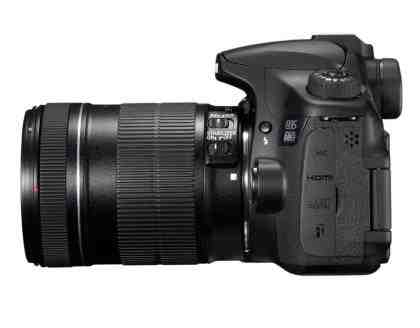It’s not easy following the trajectories of Canon and Nikon’s SLR product lines. As Nikon replaces its superb but aging D90 with the considerably more upmarket Nikon D7000 , the Canon 60D is in many ways a downgrade to the 50D it replaces. It’s encased in plastic rather than magnesium alloy, has fewer buttons and slower continuous performance. However, the 60D is still a tempting alternative to the more affordable Canon 550D , so let’s examine how these two differ.
The short answer is hardly at all. They share the same 18-megapixel sensor, DIGIC 4 processor, 63-zone metering system and – by and large – the same range of photographic functions. The 60D’s nine autofocus points are all cross-type for increased accuracy whereas only the 550D’s centre autofocus point is cross-type. It also has a manual volume control for its video function. Otherwise, though, the quality of their photos and videos is identical for any given lens.

The video mode has the same virtues and flaws. It offers full control over the aperture, shutter speed, ISO speed and frame rate – a critical feature for creative videographers. Quality was excellent, with crisp details, rich colours, barely any noise and no sign of compression artefacts, thanks to the AVC codec and massive 45Mbit/s bit rate. The resulting files are huge, though, and require a fast PC for playback and editing. It also means that the 4GB file limit equates to around 12 minutes of video at 24fps. There’s no countdown to warn when recording is about to stop.
Sound quality from the internal mono microphone was excellent, and there’s a stereo minijack for an external microphone. Autofocus during video recording was terrible, though. The focus darted back and forth like a learner driver trying to reverse park, the soundtrack was obliterated with lens motor noise and manual exposure settings were interrupted as the camera adjusted the image to assist the autofocus. Creative videographers will be happy to focus manually but this video mode isn’t for casual use. We also found that inadequate anti-aliasing sometimes created moiré patterns and odd motion in dense textures – something that won’t bother casual users but is more of an issue for discerning use.
